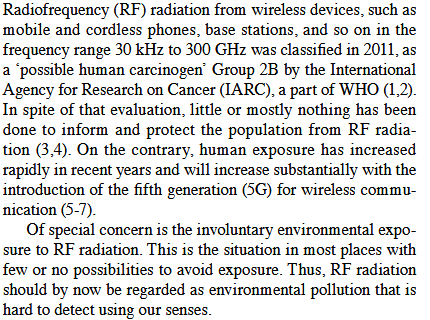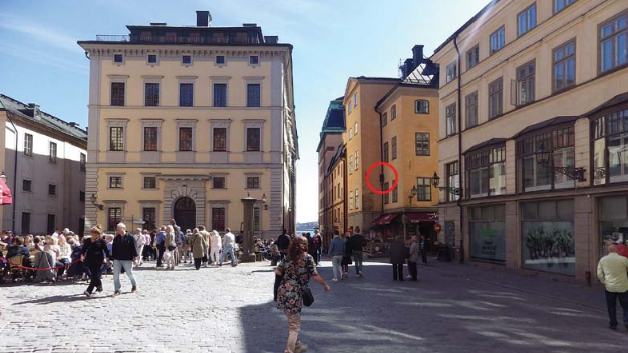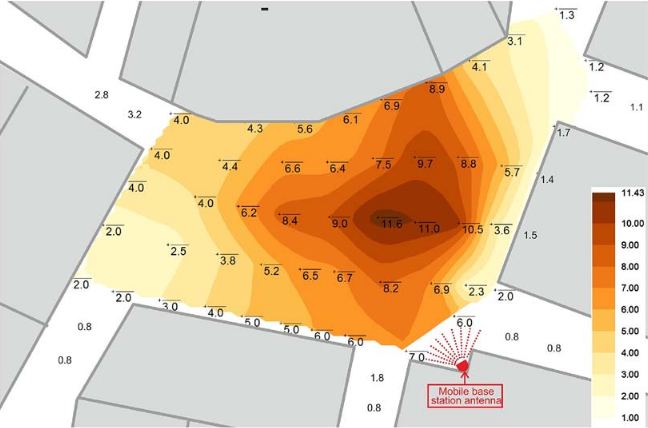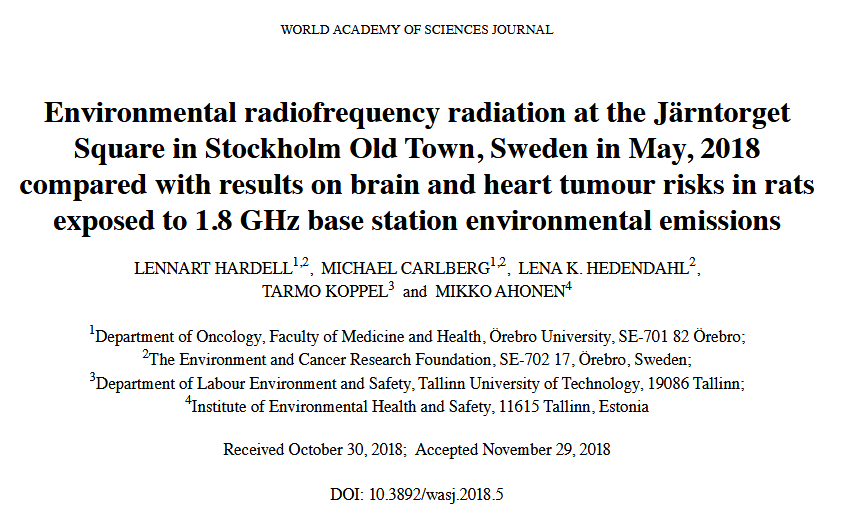Abstract:
Radiofrequency (RF) radiation in the frequency range 30 kHz to 300 GHz was evaluated in 2011 by the International Agency for Research on Cancer (IARC) at WHO to be a ‘possible human carcinogen’ Group 2B. The conclusion was based on human epidemiological studies on an increasedrisk of glioma and acoustic neuroma.
In previous measurement studies, we found high environmental RF radiation levels at certain public places and also in an apartment in Stockholm, Sweden. One such place was the Järntorget square in the Stockholm Old Town. The EME Spy exposimeter was used for these studies. We have now conducted a field spatial distribution measurement with a
radiofrequency broadband analyser. The maximum E-field topped at 11.6 V/m at the centre of the square, where the antenna was focused.
Järntorget’s mean value was 5.2 V/m, median 5.0 V/m, range 1.2-11.6V/m. Of interest is that this level can be compared to a lifespan carcinogenicity study on rats exposed to 1.8 GHz GSM environmental radiation performed at the Ramazzini Institute (RI) in Italy. A
statistically significant increase in the incidence of malignant schwannoma in the heart was found in male rats at the highest dose, 50V/m. In treated female rats at the highest dose, the incidence of malignant glial tumours was increased, although this was not
statistically significant.
On the whole, the findings of this study showed that RF radiation levels at one square, Järntorget, in Sweden, were only one order of magnitude lower than those showing an increased incidence of tumours in the RI animal study. An increased cancer risk cannot be excluded for those working in the proximity of Järntorget for longer time periods.
Excerpt from the Introduction

.
![]()

![]()
http://worldacademyofsciences.com/journal/WASJ-104_HARDELL.pdf

